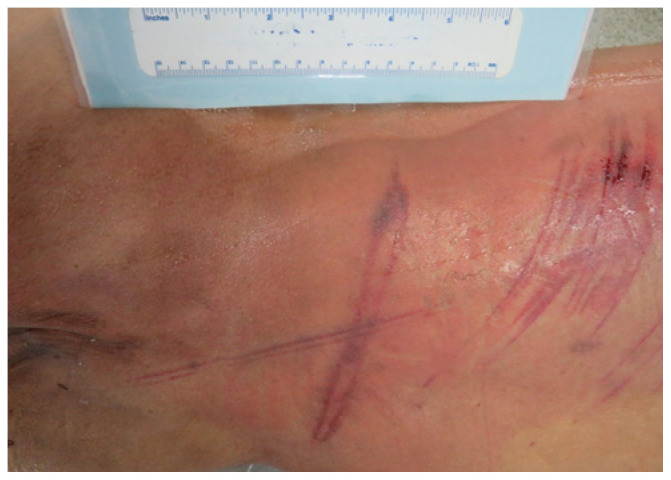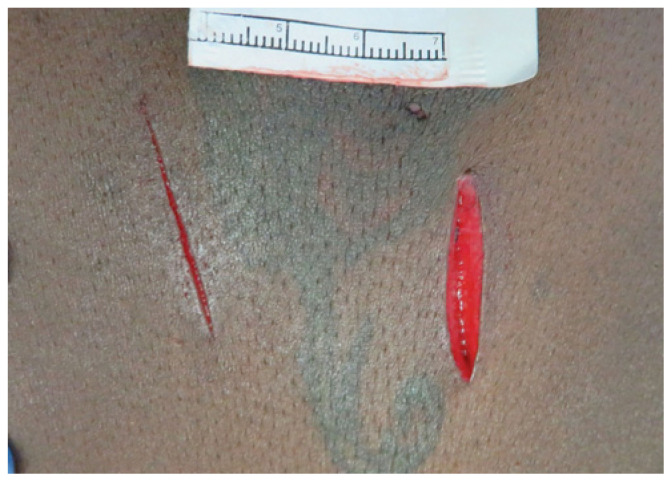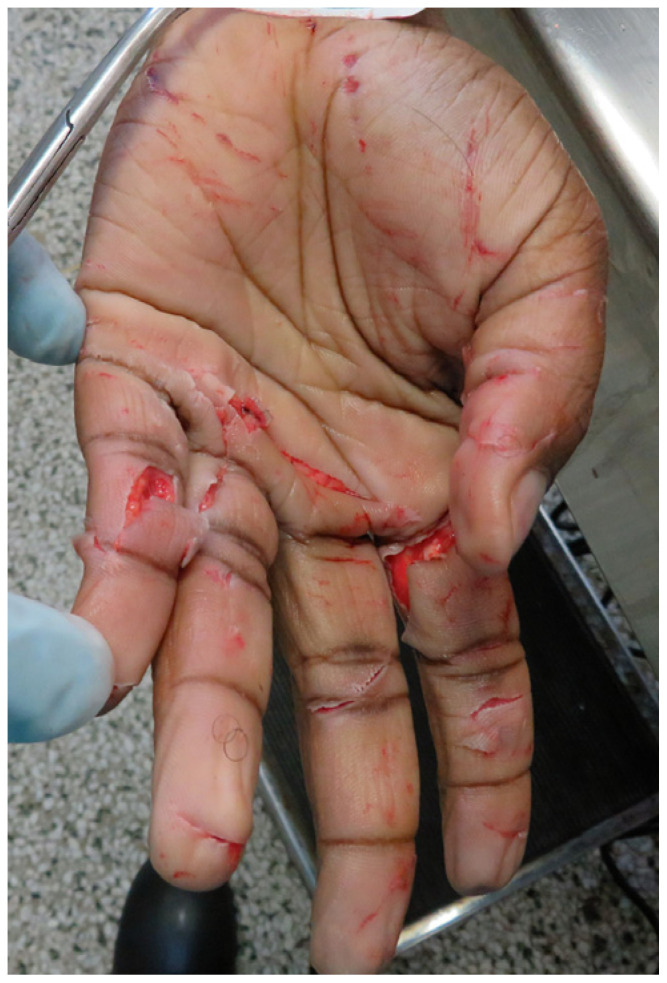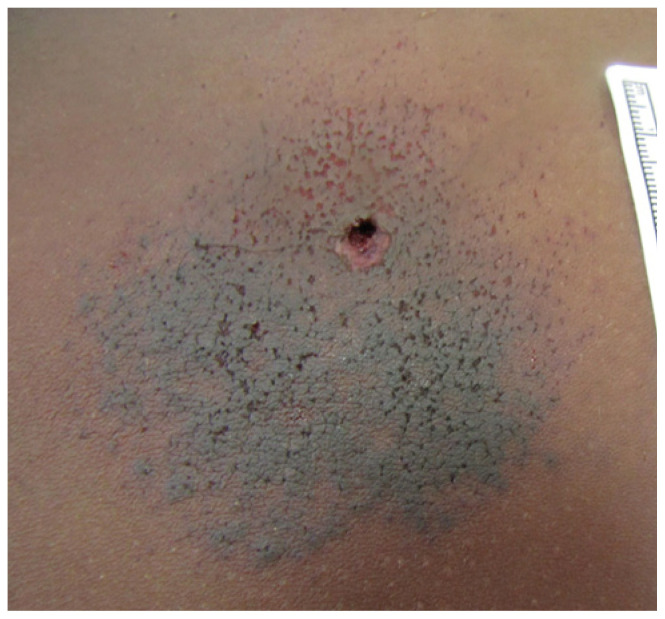Introduction
Information and opinions generated by death investigations are not only used in resolving issues about a particular person’s death but are also critically important in public health surveillance and epidemiology, as well as community safety. In the United States, death investigation systems vary across the country and are either Medical Examiner systems, Coroner systems, or a combination of both, based on local (usually county or state) jurisdiction. There are approximately 2,400 death investigation systems in the country and approximately 20% of deaths in the U.S. fall under medical examiner/coroner (ME/C) jurisdiction. These deaths include those considered unnatural, sudden and unexpected, violent, traumatic, while in custody of the law, or otherwise suspicious. Suffice to say, if there is any component of the death that is attributed to an unnatural etiology, the ME/C needs to be contacted for proper investigation and certification of the death.
In most jurisdictions medical examiners are physicians trained as pathologists, and then some receiving subspecialty training as forensic pathologists who apply their professional principles and medical knowledge to the examination of the deceased for the determination of cause, mechanism, and manner of death. Forensic pathology is a unique discipline within medicine that bridges the world of science and law. A forensic pathologist is a physician who has undergone at least three years of anatomic pathology residency and one year of subspecialty training in forensic pathology. Many forensic pathologists have additional training and expertise in clinical pathology, neuropathology, cardiac pathology, and pediatric pathology. In addition to traditional medicine, forensic pathologists receive training in multiple disciplines within the forensic sciences such as toxicology, firearms, trace evidence and anthropology. Further, we lend our expertise in recognizing, evaluating and explaining pathology issues that arise during the investigation, assessment and adjudication of criminal and civil cases, often providing testimony as expert witnesses.
There are approximately 700 board certified forensic pathologists currently practicing in the U.S., though this is a generous estimate. Based on the National Association of Medical Examiners (NAME) accreditation workload standards, to serve the U.S. population, more than 1,200 are needed. Efforts to raise awareness of this shortage to state and federal policy makers are ongoing and increased funding and resources are necessary to allow death investigation services to serve our communities. As the opioid epidemic took hold of our country, ME/C caseloads have significantly increased. Further compounded by the pandemic, overdose cases in many jurisdictions have continued to rise on top of an unwavering volume of homicides. The workforce shortage is being felt across the country and we are facing a crisis.
Death Certification
Nearly all clinicians will be called upon to complete a death certificate in their career, albeit some more often than others, depending on their specialty and patient population. It is the final duty to our patients and their families to certify their deaths accurately and in a timely fashion. That said, death certification is often not taught well, or at all, in medical school and residency training. The importance of accurate death certificate data cannot be overstated. The legal document has multiple applications from providing families with a sense of closure to being required for arrangements of end-of-life legal matters. The data collected via the death certificate is compiled into a national database from which morbidity and mortality statistics are generated. Data are then used for surveillance of health and illness, identifying hazards to safety and trends in injury/illnesses and proper allocation of resources to prevent injury/illness and promote public welfare.
The underlying or the proximate cause of death is the etiologically-specific disease or injury that initiates an unbroken sequence of events that produces the end result of death; without this underlying cause, the death would not have occurred. Immediate causes of death are specific diseases/injuries stemming from the underlying cause that directly precipitate death. In general, the immediate cause of death is the disease/injury that leads to death “today” and the underlying cause of death is the disease/injury leading to the immediate cause. There may be a number of intermediate causes interposed between the immediate cause and the underlying cause.
In contrast to causes of death, mechanisms of death are non-specific pathophysiologic derangements through which the cause of death exerts its lethality. The two most common errors in death certification are 1) the substitution of a mechanism for the cause of death; and 2) identifying the immediate cause of death without identifying the underlying cause. Examples of this principle can be seen with exsanguination and arrhythmia. These are not etiologically specific and are derangements set in motion by the underlying cause. In order to arrive at the underlying cause of death, one must engage in the exercise akin to a toddler incessantly asking “why?” Why did the person exsanguinate? From the transected iliac artery. Why is the iliac artery transected? From the gunshot wound. When the “why?” can no longer be answered, one has reached the underlying etiology as cause of death. Similarly, if death is consequent to an arrhythmia such a ventricular fibrillation (VF), it must be recognized that many illnesses, injuries, and toxic agents can manifest as the VF (the mechanism of death) and that the disease, injury, or illness responsible for the development of the episode of VF is the “cause of death.”
The circumstances surrounding the death, known as the “manner of death,” fall into five categories. A natural manner is due exclusively to natural disease processes. Therefore, if an injury, physical and/or chemical, contributes to death, the death cannot be classified as natural. Violent deaths are classified as homicide, suicide, or accident. In circumstances where the cause and/or manner cannot be reliably determined following investigation, examination, and ancillary studies, or there are several equally plausible possible circumstances, an undetermined cause/manner of death may be utilized. In some jurisdictions, therapeutic complication is a distinct manner that is applied when the fatality arises from known potential complications of diagnostic or therapeutic procedures, whether the complications are expected or predictable. Death certificates cannot be certified by non-ME/C authorized individuals if the death involves anything other than natural disease in a natural (innocuous) setting. For example, death consequent to either a cardiac dysrhythmia or acute myocardial infarct due to coronary artery atherosclerosis seems to merit a natural manner until one considers that the terminal cardiac event was precipitated by emotional and/or physical stress incurred during an armed robbery attempt. In such a circumstance, the manner of death would be certified as “homicide.” Physical and emotional stresses encountered during activities such as arguments, shoveling snow, and cutting the grass in hot weather are considered as components of “normal” daily life and do not warrant a non-natural manner of death. In short, determination of cause of death rests heavily on medical principle while determination of manner of death rests heavily on circumstance investigation.
In most cases, the need to report the death to a ME/C, is obvious: the trauma patient that comes in with multiple gunshot wounds or the sudden and unexpected death of an infant. All would agree that these cases require ME/C notification and that these deaths fall under medico-legal jurisdiction. Others however, may not be as obvious unless the right questions are asked.
Take the case of the elderly patient you have had on your service for months as she struggled with congestive heart failure exacerbation and blood pressure control, as well as complications of bronchopneumonia and urinary tract infection. Without asking the right questions, one would not be faulted for thinking this would be a natural disease etiology and not necessary for reporting. Though, upon further review, one may discover that her initial presentation was after tripping over the dog and sustaining a fall from which she had a femoral fracture that required surgical repair. After orthopedic intervention, she never returned to baseline. If not for the fall, the patient would not have had the sequence of events that led to her demise. As such, it can be agreed upon that this death, at the least, requires a notification to the ME/C. Depending on jurisdiction and office capability, the decedent may not need to be brought to the office for examination, and review of records may suffice for certification by the ME/C, as an accidental manner, attributing to the trauma she sustained from a fall.
Another section of the death certificate that is often misunderstood is the “other significant conditions” section. Reading the fine print on the death certificate pertinent to this section further indicates that these “significant conditions” played some contributory role, although not causal, in death. Thus, diabetes mellitus or chronic hypertension would be listed as significant contributory factors to someone whose cause of death was arteriosclerotic cardiovascular disease. The fact that the patient may have had a successfully excised non-melanotic skin cancer 15 years prior or had an incidental 10 mm renal cell carcinoma detected during an autopsy may be interesting or had been significant at one time does not warrant its being listed as an “other significant condition” because it did not contribute to the patient’s death.
Our principle role as forensic pathologists functioning as medical examiners or coroner’s pathologists is in determining cause and manner of death. If ever there is a question, reach out to your local ME/C office and we can guide you. Training and instruction materials can also be found through the CDC and the National Vital Statistics System.
No Single Finding is Interpreted in a Vacuum
The approach to a case for a forensic pathologist is not very different from that of a clinician evaluating a living patient. Though our format differs, the history of present illness (HPI) of a case is paramount. Our patients being unable to provide said history, we rely on the investigation, which includes accounts given by family/friends and witnesses, law enforcement evaluation, and most importantly, inspection of the scene. Information gathered from the scene, together with past medical and social history, guide our differential diagnoses. Our physical exam often starts at the scene by our death investigators and does not conclude until the results of the autopsy, histology, toxicology, and other ancillary studies have come to completion. In cases where the decedent had survived for a period of time in a medical care facility prior to death, the admission physical examination provides us with important information. As in clinical medicine, no finding or laboratory value is interpreted in a vacuum. We interpret particular findings in the context of all available pertinent information when generating our opinions on the cause and manner of an individual’s death.
The investigation of the death/injury scene is critical in making medicolegal decisions. Every scene has the potential for all manners to be considered and underlying cause to be discovered. Take a case of an individual who is found deceased alone at a hotel room. Was the room locked and secured? Where was the individual found? Does anything at the scene look out of place or suggestive? Is there a tentative identification on the deceased and can we obtain pertinent medical and social history? Our differential diagnoses in a case of an individual found in a locked and secured room with a cut straw and white powder residue is going to be different from that of an elderly individual found dead in bed in a sleeping pose, though in both scenarios, the suspicion of foul play can be lowered as the room is secured. Similarly, if the said individual is found with multiple empty bottles of prescription medication, this may guide our autopsy to include gastric content testing for consideration of ingestional suicide, in addition to standard specimens for toxicology.
Similar to the clinicians’ recognition of metaphyseal lesions being critical to raise concern for abuse or non-accidental trauma in children, our unique knowledge in wound characteristics and wound mechanics allow us to be important partners to law enforcement for their investigative direction.
Injury interpretation, in general, involves three steps: 1) recognition of the features of the particular wound (gunshot, stab, blunt force, etc.); 2) recognizing if a particular injury has a pattern (e.g., gunshot entrance or exit, range of fire, etc.); and 3) recognizing patterns of injury due to the constellation of injuries including their numbers and locations (e.g., defensive wounds, pattern of fall versus assault). Recognizing soot and stippling pattern adjacent to a gunshot entrance wound (Image A) can give guidance as to approximate range of fire. A stab wound (Image B) with clean tissue edges, an angulated end with a squared off opposing end is suggestive of a single edged blade. Whereas, abrasion/contusion (Image C) characteristics can provide information about the instrument or incident (e.g., minimum number of strikes, evidence of defensive posturing, etc.), such as those depicted in Image C that are typical of contusions caused by being struck with a rod-like object leaving a tram-track appearance on the skin surface. Further, the location of the wounds and its characteristics such as those on the palmar aspect of the hand as depicted in Image D can be suggestive of defensive posturing of the decedent attempting to grab the implement. Relaying this information appropriately to law enforcement can ensure proper seizure of objects that may have been used as a weapon and which can then be further analyzed for trace evidence in the crime laboratories.
Image C.
“Tram-track” contusion characterized by a pale central area flanked on either side by linear contusion due to impacts with elongated rigid objects
Image B.
Sharp force injury with clean tissue edges with subsequent internal examination disclosing deep penetration of wound through adjacent rib and lung. Features of stab wound are suggestive of a single edged, non-serrated knife.
Image D.
Sharp force injuries on the left palm and volar aspect of the fingers, suggestive of defensive posturing of the decedent attempting to grab the implement
Duty to Educate
Though the primary role of the forensic pathologist when acting as the Medical Examiner or Coroner’s pathologist is in the determination of cause and manner of death, in large part, we are educators. We educate the families and the loved ones left behind with questions as to why and how their loved ones have died and whether other family members may be at risk; we educate law enforcement and other investigative personnel about pathology issues to help guide their investigations; we educate judges and jurors on our findings and conclusions so they can make the dutiful difficult decisions of guilt or innocence; we educate clinicians on what more they could or could not have done; and we educate the public on injurious and fatal trends we are seeing in our communities such as the opioid epidemic.
Conclusion
Forensic pathology is a unique field of medicine that is intimately intertwined with law and public health. We see tragedies daily and are in the shadows of the triumphs generated from the work we do, but it is one that is incredibly rewarding. To quote Giovanni Morgagni: “Hic locus est ubi mors gaudet succurrere vitae.” [This is the place where death delights to help the living.]
Image A.
Gunshot wound with typical entrance features including round tissue loss and abrasion collar, with soot deposition and stippling of adjacent skin. Range of fire in this gunshot wound is intermediate.
Footnotes
Michael Graham, MD, (left), has been practicing forensic pathology since 1981 and has been the Chief Medical Examiner for the city of Saint Louis since 1989. He is a past president of the National Association of Medical Examiner. Kanayo Tatsumi, MD, (right), has been an assistant medical examiner, serving the city of Saint Louis since 2019. Prior to coming to Saint Louis, she has worked in Medical Examiner offices of New York City, Wisconsin, and Vermont.







